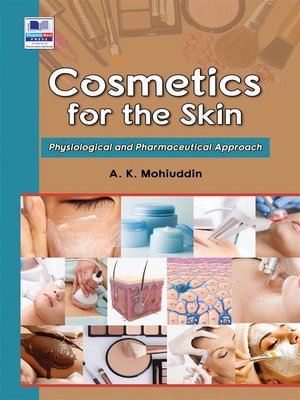
Sign up to save your library
With an OverDrive account, you can save your favorite libraries for at-a-glance information about availability. Find out more about OverDrive accounts.
Find this title in Libby, the library reading app by OverDrive.



Search for a digital library with this title
Title found at these libraries:
| Library Name | Distance |
|---|---|
| Loading... |
The first finding of cosmetics comes from Ancient Egypt, some 6,000 years ago. Civilizations have used cosmetics – though not always recognizable compared to today's advanced products – for centuries in religious rituals, to enhance beauty, and to promote good health. The global cosmetic market prized more than $500 billion USD in 2017 and expected to reach $800 billion by 2023, with a 7% compound annual growth rate. Growth in global economies, changes in lifestyle, increased competition for skin and sun care products, due to varying weather conditions, are encouraging the growth of the cosmetics market. Rising interest in natural, herbal, and biodynamic skin care products creates new opportunities for manufacturers to innovate and develop new products in line with consumer preferences. The book "Cosmetics for the Skin: Physiological and Pharmaceutical Approach" mostly focuses on the chemical and pharmacological aspects of using these additives along with the main ingredients. The rising market needs constant multifaceted control, i.e., monitoring of harmful chemicals and biological degradation. Adding artificial ingredients to consumer cosmetic products is a common practice for increasing cosmetic efficacy, maintaining cosmetic effectiveness, and producing a longer-lasting, more viable product. The chapters of the book cover an extensive list of topics, including, but not limited to, the basics of skincare products, such as the raw materials of cosmetics and their application; technical implications of the merits and demerits of ingredients used, as well as theoretical knowledge; skin creams, lighteners, tanners, sunscreens, facial powders, acne protection, and anti-aging formulations. Harmful cosmetics pose a risk to consumers owing to the presence of impermissible or prohibited substances under the current cosmetic legislation. Cosmetic hazards and regulations are therefore discussed in detail to give readers a clear idea.
Contents:
1. Cosmetics in Use
2. Skin Creams
3. Skin Lightening and Management of Hyperpigmentation
4. Skin Aging and Modern Age Anti-Aging Strategies
5. Sunscreen and Suntan Preparations
6. Face Powders: Functional Uses and Formulations
7. Acne Protection
About the Author:
A. K. Mohiuddin, B.Pharm and M.Pharm from Department of Pharmaceutical Technology, Faculty of Pharmacy, University of Dhaka. He has completed his MBA from East West University. He was in faculty of Pharmacy, World University of Bangladesh as an Assistant Professor. Along with 8 years of teaching experience, he also worked for reputed pharmaceutical companies for 5 years. He authored 10 books and many articles on skin care cosmetics, alternative medicines, patient care, marine drug sources and other recent issues of healthcare in several journals and newspapers. He is now acting secretary and treasurer in Dr. M. Nasirullah Memorial Trust.
Contents:
1. Cosmetics in Use
2. Skin Creams
3. Skin Lightening and Management of Hyperpigmentation
4. Skin Aging and Modern Age Anti-Aging Strategies
5. Sunscreen and Suntan Preparations
6. Face Powders: Functional Uses and Formulations
7. Acne Protection
About the Author:
A. K. Mohiuddin, B.Pharm and M.Pharm from Department of Pharmaceutical Technology, Faculty of Pharmacy, University of Dhaka. He has completed his MBA from East West University. He was in faculty of Pharmacy, World University of Bangladesh as an Assistant Professor. Along with 8 years of teaching experience, he also worked for reputed pharmaceutical companies for 5 years. He authored 10 books and many articles on skin care cosmetics, alternative medicines, patient care, marine drug sources and other recent issues of healthcare in several journals and newspapers. He is now acting secretary and treasurer in Dr. M. Nasirullah Memorial Trust.







